|
ID |
Nickname |
Country / City |
Languages |
Taxonomies |
Comment |
Project / Group |
Map |

|
47064
|
|
ʻAmelika Hui Pū ʻIa
Honolulu
|
|
|
HK - This is a bag that I found in Foodland in front of the cashier lines. It is Hawaiian and Pidgin present but I would like to point out the lower left-hand corner of the bag, Hana Hou. This is a very common saying where it can be used in both Pidgin and Hawaiian with the emphasis on using this saying for “do it again” whether that's a performance, an act, or an action, typically this is more common in performances such as shows or musical singing or dancing or playing instruments. This is just advertising the local culture here in Hawaiʻi to anyone that comes across this bag and I feel like it does somehow capture the spirit here.
|
Multilingual Hawaiʻi
|
|
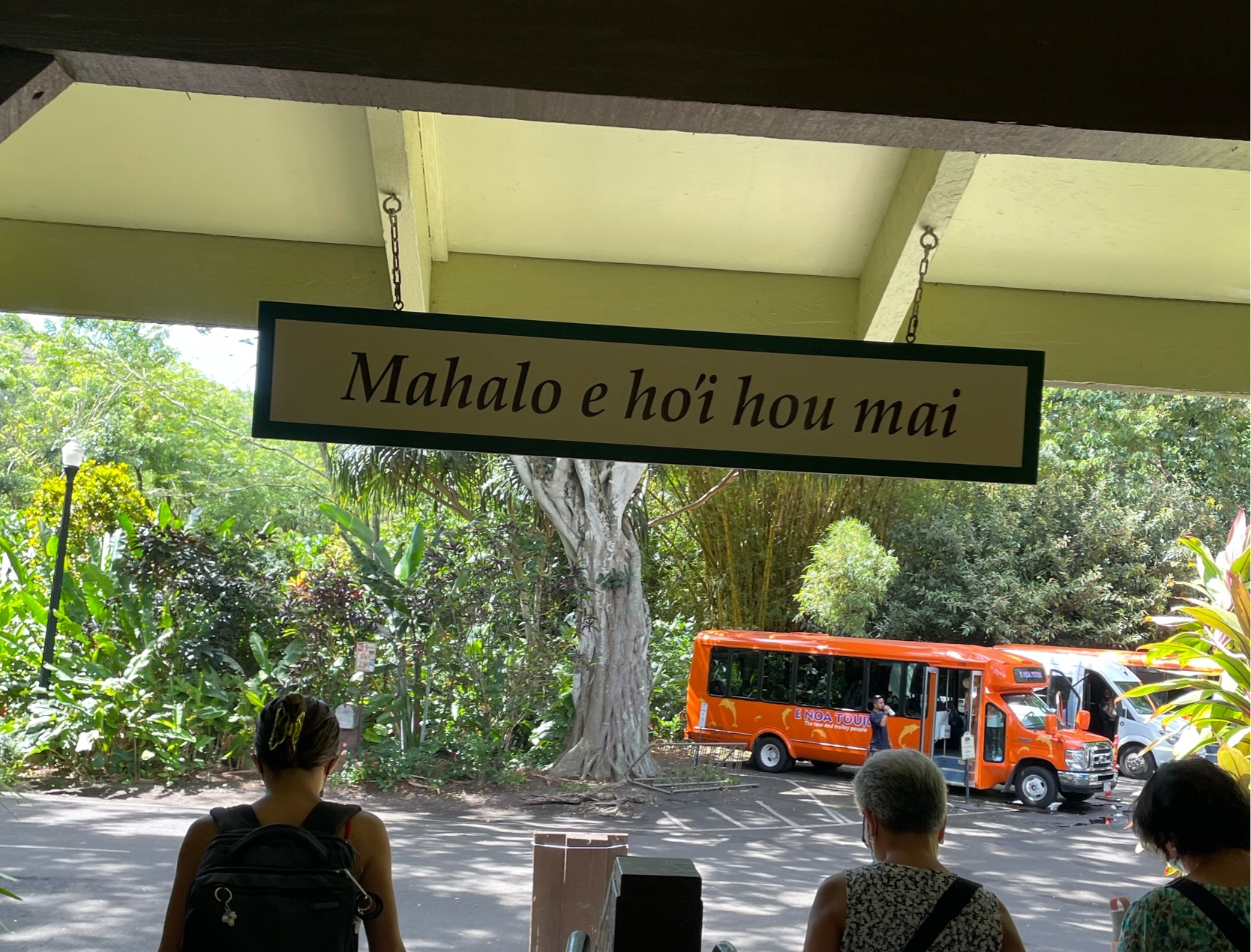
|
46548
|
|
United States
Haleiwa
|
|
|
(SP)(check in #3) Hawaiian can be found on this permanent wooden sign at the exit of a nature reserve. Hawaiian was used here to thank the guests and encourage them to come again, but that it not clear to those who do not understand Hawaiian—this sign may have been placed here to add to the “beauty and authenticity of Hawai'i” feeling without actually having to be understood by most guests, and perhaps get a nod and a smile from guests who do speak Hawaiian. Many people unfamiliar with Hawaiian may see the language as something ancient, mystical, and powerful, so the park may have been trying to go for this feeling by adding a “mystical” phrase in Hawaiian at the exit (even though its actual meaning is quite mundane).
|
Multilingual Hawaiʻi
|
|
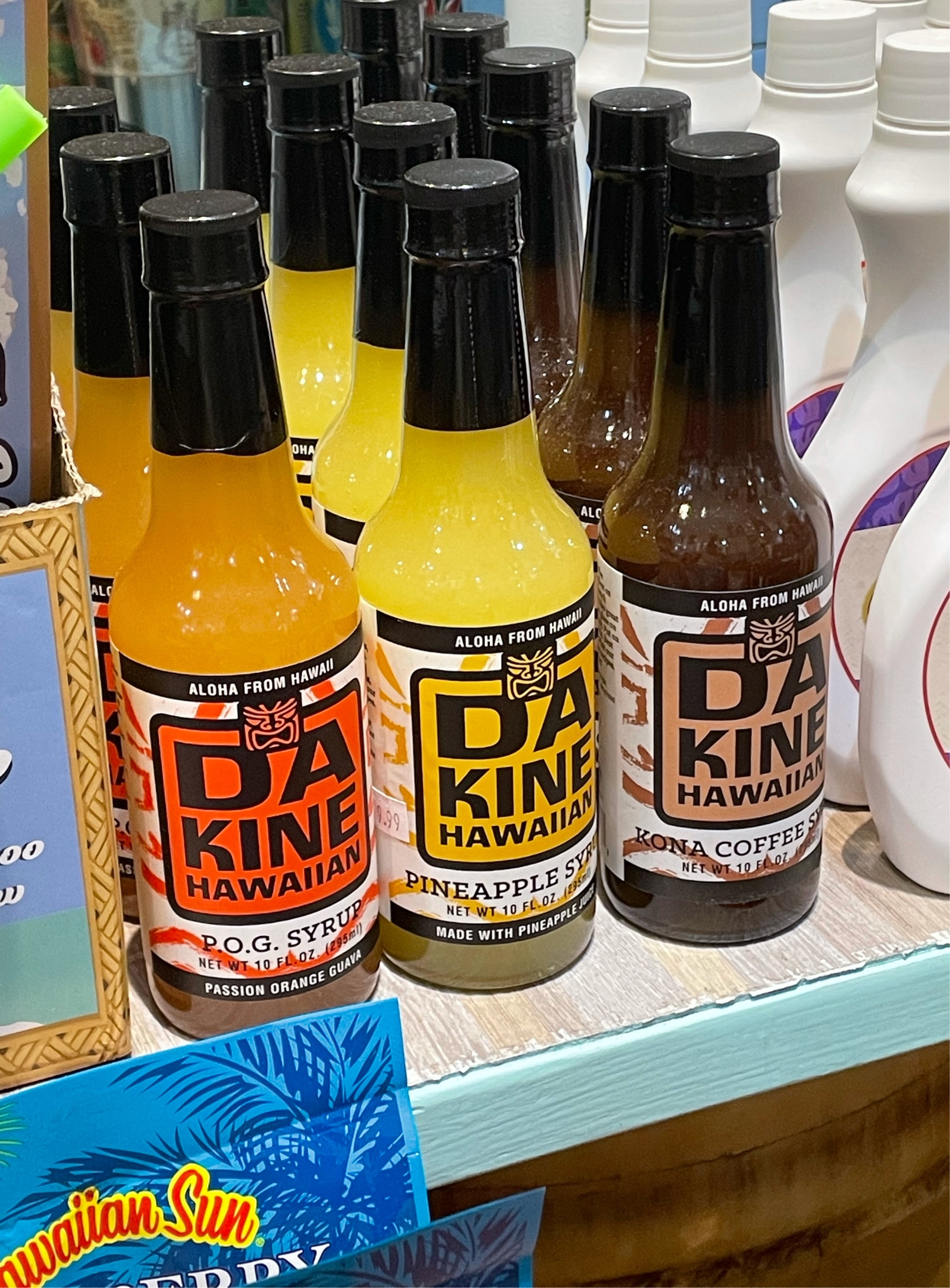
|
46547
|
|
United States
Honolulu
|
|
|
(SP) (check in #3) this is a photo of Pidgin being used on the label of flavored syrups, in the domain of commodification. These were found in a tourist-y shop with many instances of Hawaiian and Pidgin language being commodified to sell more products. Here, Pidgin is used in the brand name of the company, likely to appeal to tourists who might want to know more about this phrase, while also staying familiar with Locals. According their website, this company uses Da Kine to mean “the one” or “the best”, and that may be the how they sway the thinking of their Local customers. Judging by the designs, logo, and language used on these bottles, this brand clearly wanted to push their “Hawaiian” authenticity, perhaps to encourage tourists to buy their products to show off back at home or order their products online.
|
Multilingual Hawaiʻi
|
|
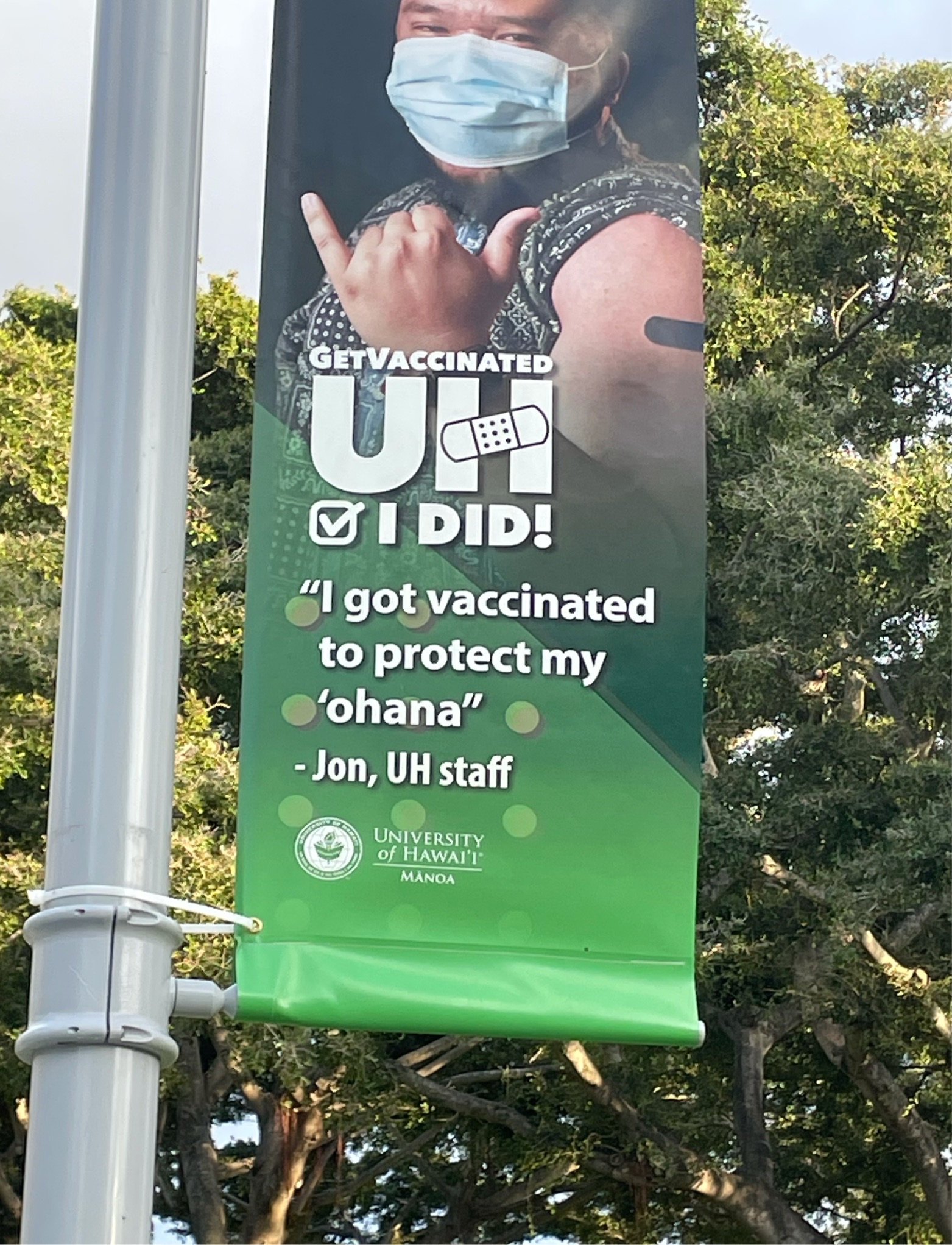
|
46543
|
|
United States
Honolulu
|
|
|
(SP)(check in #3) This is a semi permanent canvas sign found on the UH Manoa campus, in the domain of student life/education/public health. It contains only one Hawaiian word, 'ohana (family), which is seamlessly incorporated into an English sentence. Though this word is extremely well known and likely to be understood by students from outside Hawai'i, the use of this word, when combined with the picture of a UH staff member who looks either native Hawaiian or at least Local & racially ambiguous, is meant to tug at the heart strings of Local students. They may see the word 'ohana and immediately think of their own unique Local family, and this may encourage those who haven’t yet to go and get vaccinated.
|
Multilingual Hawaiʻi
|
|
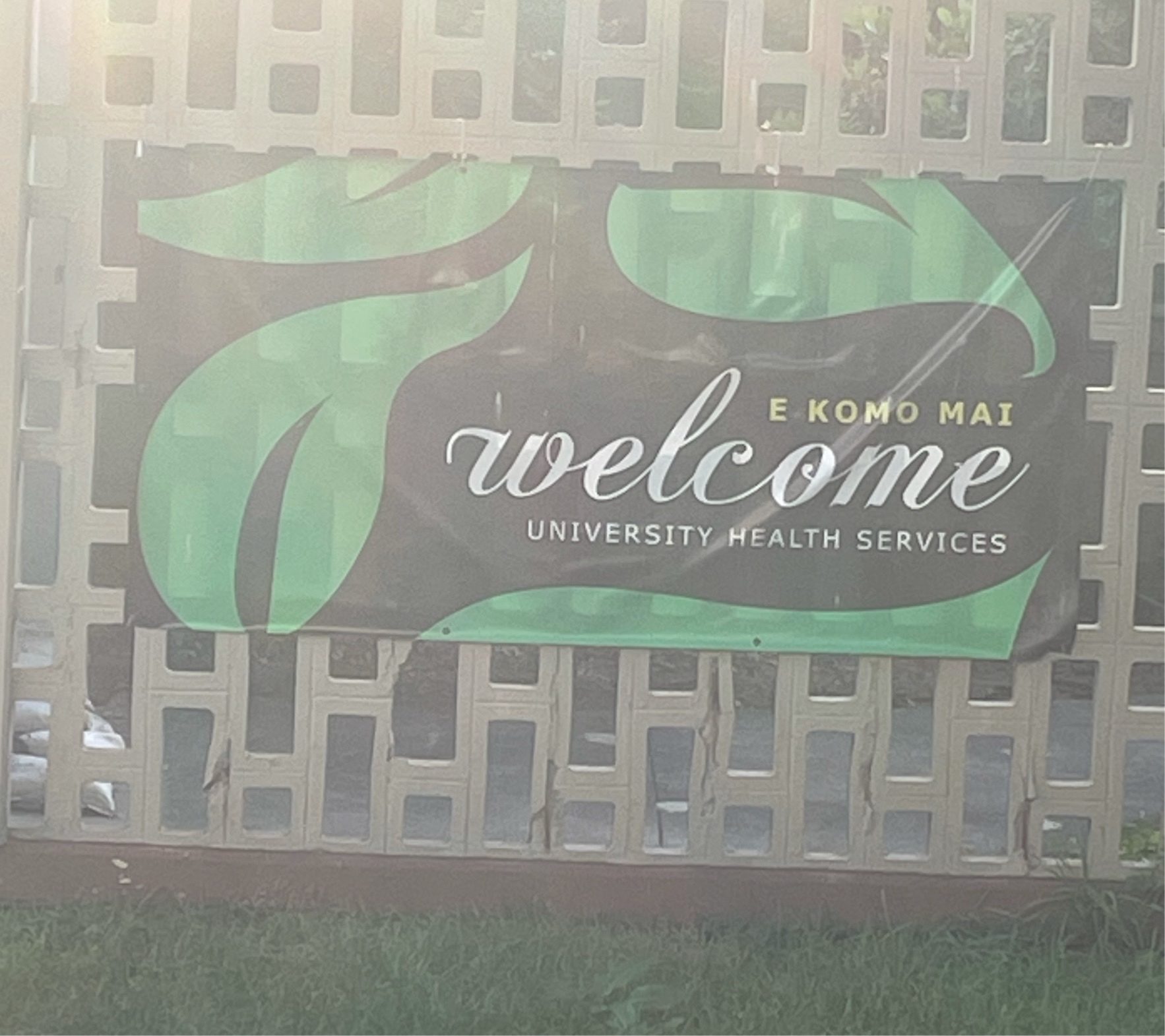
|
46542
|
|
United States
Honolulu
|
|
|
(SP)(check in #3) this is a photo of a semi permanent canvas sign outside of a university building on the UH Manoa campus, in the domain of student life/education/health services. Most of the sign is in big, clear English, likely so that any one on campus, no matter where they’re from, is able to understand the sign and easily access these health services. The Hawaiian phrase for welcome (e komo mai) is in smaller letters compared to the English welcome, as if it was added as an after thought—it may have been included as a part of UH Manoa’s ongoing efforts to reconnect itself with traditional Hawaiian culture and language, and to make itself feel a bit more genuine. It may help in catching the eyes of Local students who speak Hawaiian or are familiar with this phrase, but it is clearly not the main focus of the poster and is easy to miss.
|
Multilingual Hawaiʻi
|
|
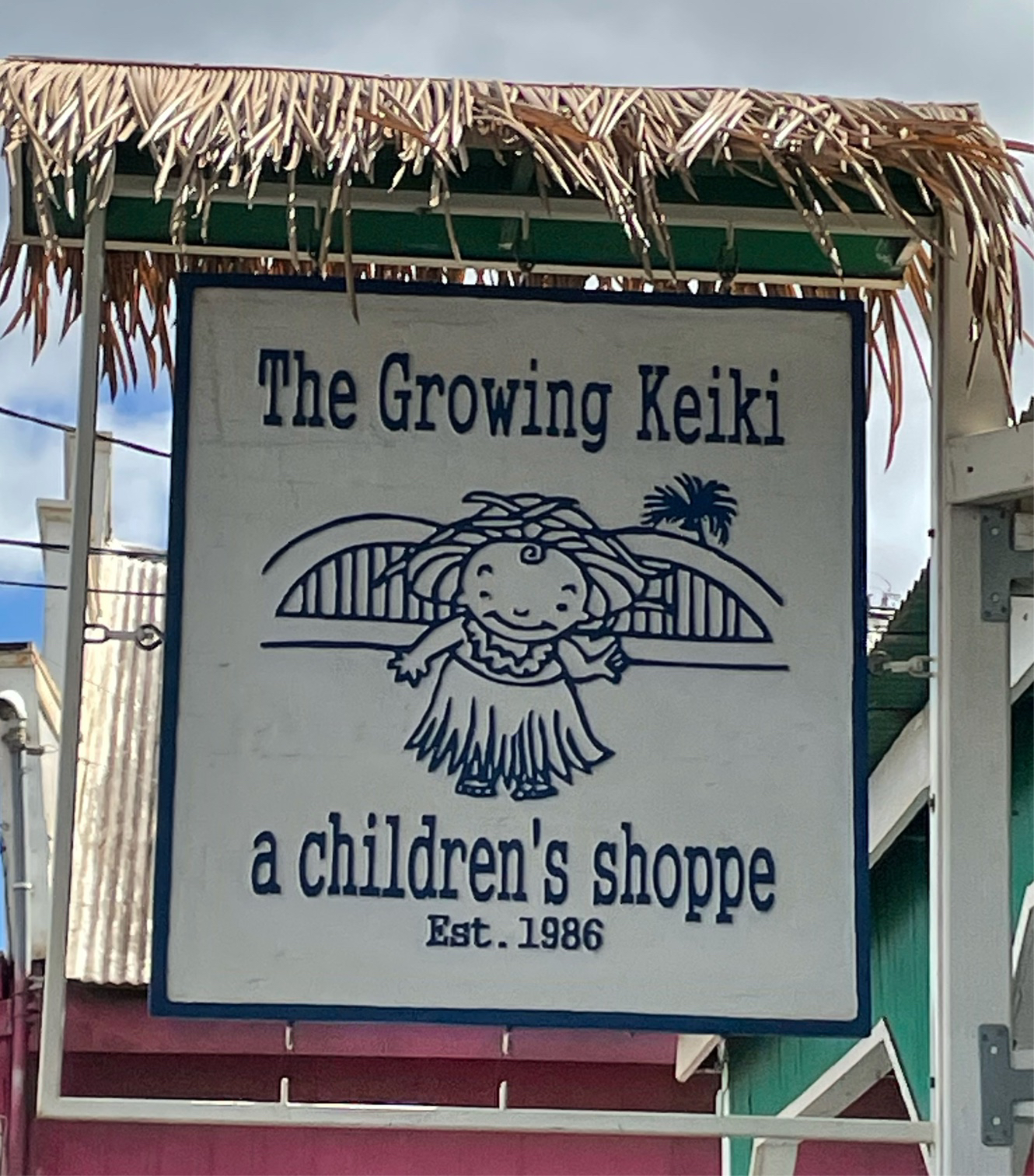
|
46541
|
|
United States
Haleiwa
|
|
|
(SP)(check in #3) this is a photo of a permanent wooden sign outside of a children’s clothing shop, in the domain of commodification. This store sells clothes branded around the Hawaiian aesthetic and language, so it makes sense that they used a Hawaiian word in their name, along with the aesthetic of straw hats, hula skirts, and leis. It is a pretty expensive store, so it is likely more popular among tourist in the area; they hang have uses Hawaiian in the name/on their sign to make the shop feel more authentically Hawaiian to tourists and Locals alike, though likely more towards tourists since they used a pretty well known, easy to figure out Hawaiian word. Tourists may see that sign and want to buy clothes to make their children feel less like normal kids and more like special little “keiki” who got to visit Hawai'i.
|
Multilingual Hawaiʻi
|
|
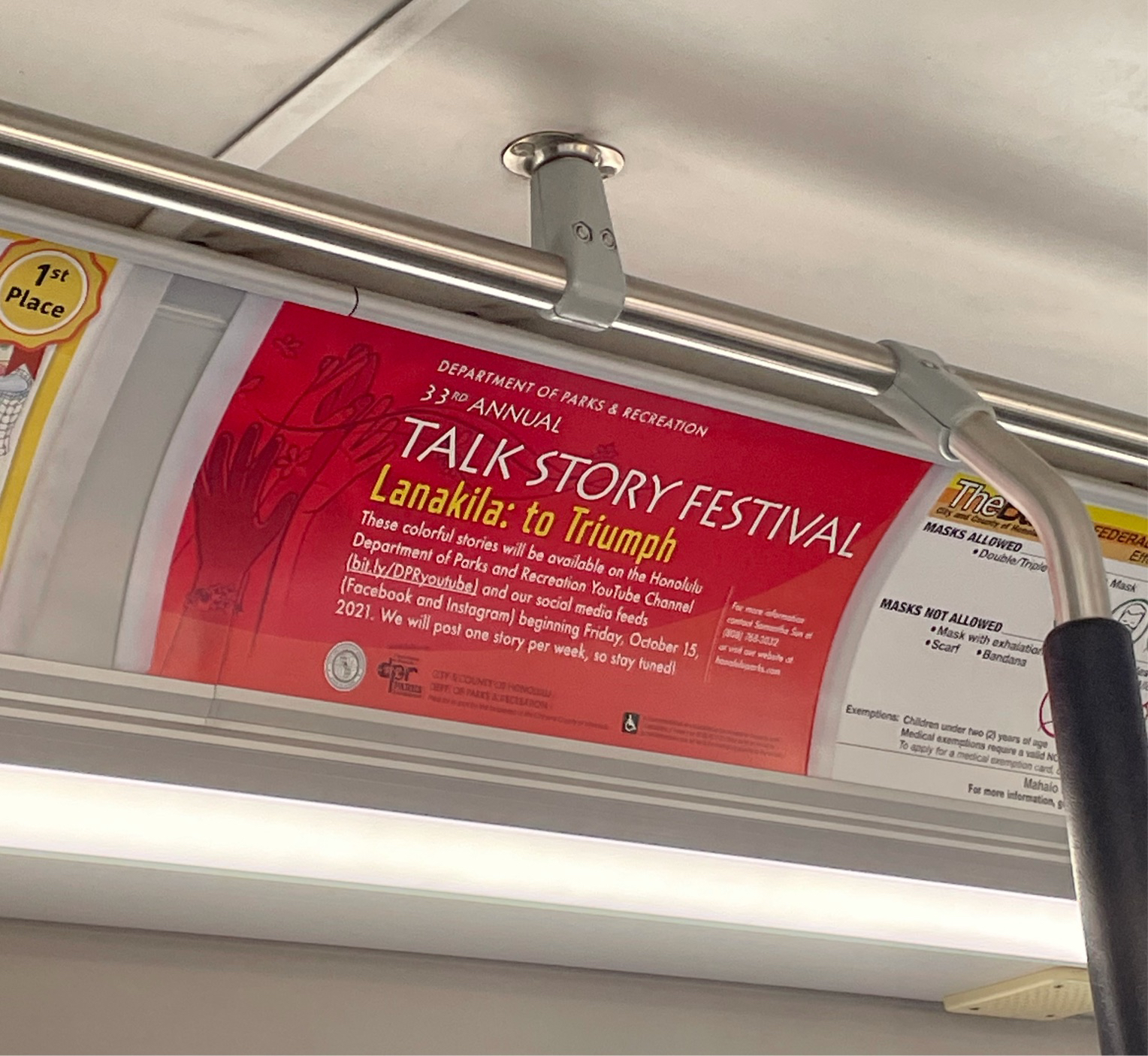
|
46540
|
|
United States
Honolulu
|
|
|
(SP)(check in #3) this photo has both Pidgin and English in it, but I want to use it as a Pidgin photo. This is a non-permanent advertisement found in a city bus in Honolulu, in the domain of transportation/advertising. The brightest, most eye catching section of the ad is in Pidgin (talk story). The Pidgin, when combined with the Hawaiian word and topic of the ad, was clearly made for Locals who understand Pidgin/Hawaiian and have an interest in Hawaiian cultural activities. English is in smaller letters with the instructions to access these stories, so that anyone, Local or non-local, will be able to access them. The topic of this poster is about working passionately to keep Hawaiian culture and story telling alive, hence the use of the Hawaiian word for triumph and the fiery red color.
|
Multilingual Hawaiʻi
|
|
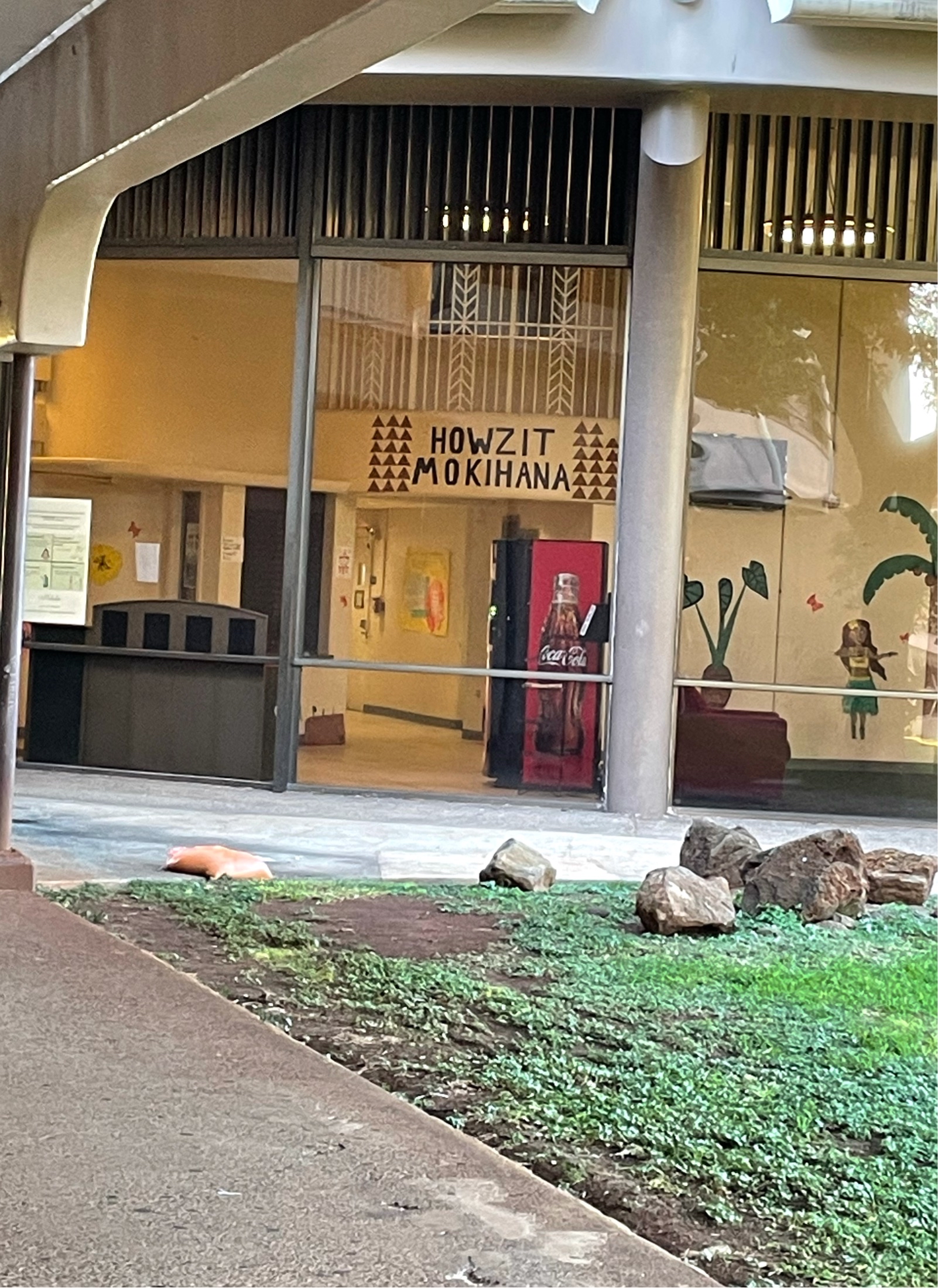
|
46539
|
|
United States
Honolulu
|
|
|
(SP)(check in #3) This photo has both Pidgin and Hawaiian in it, but I want to use it as a Pidgin photo. This is a photo of the common Pidgin greeting “howzit” permanently painted in the entrance way of a dormitory, in the domain of student life/education. Clearly this phrase was used to catch the attention and be understood by both Local students of students from out of state, since almost everyone is familiar with this phrase. It may have been used to make the dormitory feel more genuinely Hawaiian, and a more relaxing and easy-going place for students to live. It makes any student who walks in immediately feel like they are being greeted by a friend.
|
Multilingual Hawaiʻi
|
|
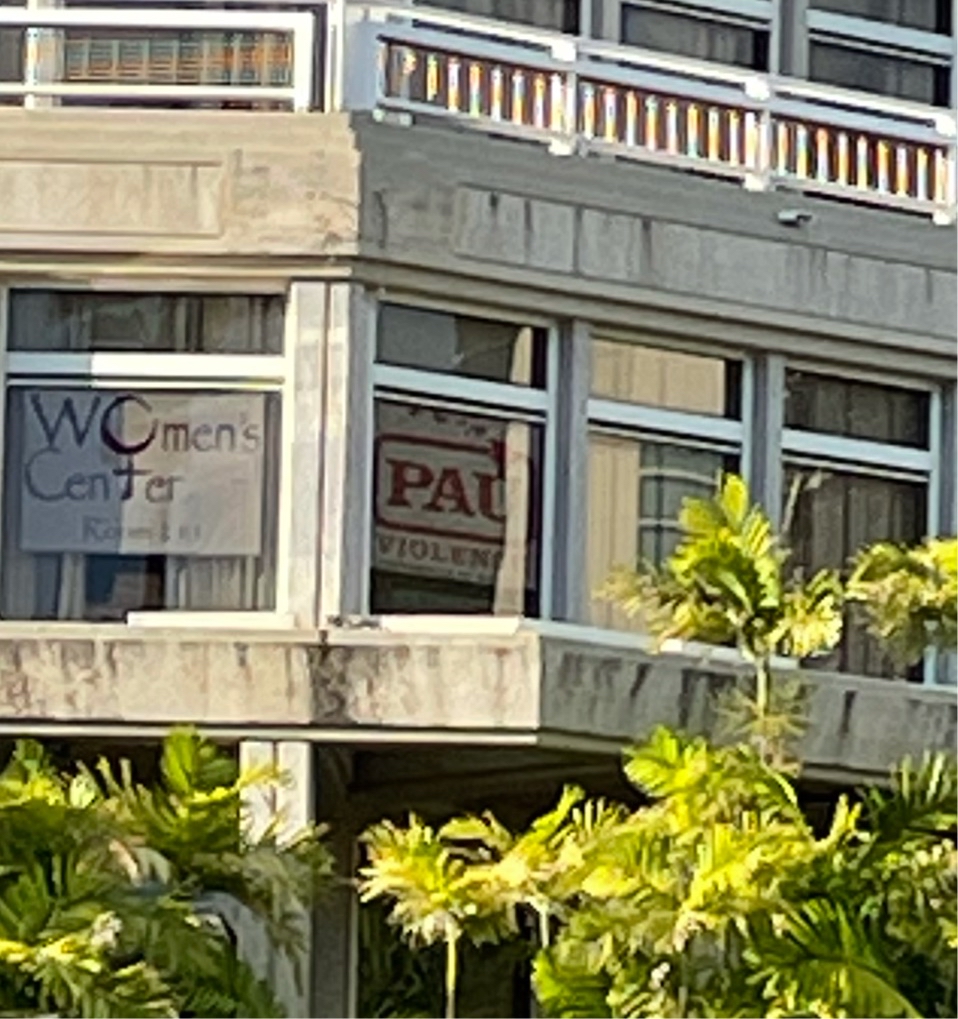
|
46538
|
|
United States
Honolulu
|
|
|
(SP) (Check in #3) though a bit hard to get a picture of, this is a semi-permanent vinyl window sign on a building on the UH Manoa campus, in the domain of student life/education. It uses the Pidgin word Pau (end, all gone) alongside the English word violence to express their views of getting rid of violence. It is also a pun, because PAU is an acronym for the on-campus organization to whom this sign belongs to. It seems they used Pidgin here to help the organization feel connected to Local students and to the school, maybe to encourage students to feel closer to the organization and reach out if they need help. The Pidgin is in huge letters compared to the English to emphasize their goal (to end violence) and because it is the name of the organization.
|
Multilingual Hawaiʻi
|
|

|
46435
|
|
United States
Honolulu
|
|
|
The domain in this photo is novelty. This is a get well greeting card. Pidgin is used throughout the phrase like “you no need”, “dis” and “stay from”. A direct translation of this phrase would be “you don’t need to ask who this card is from”. The intended audience in this case is towards the locals of Hawaii. This is printed probably on card stock. The Pidgin in this case is to connect locals to this greeting card to make them want to buy it. - CQ
|
Multilingual Hawaiʻi
|
|
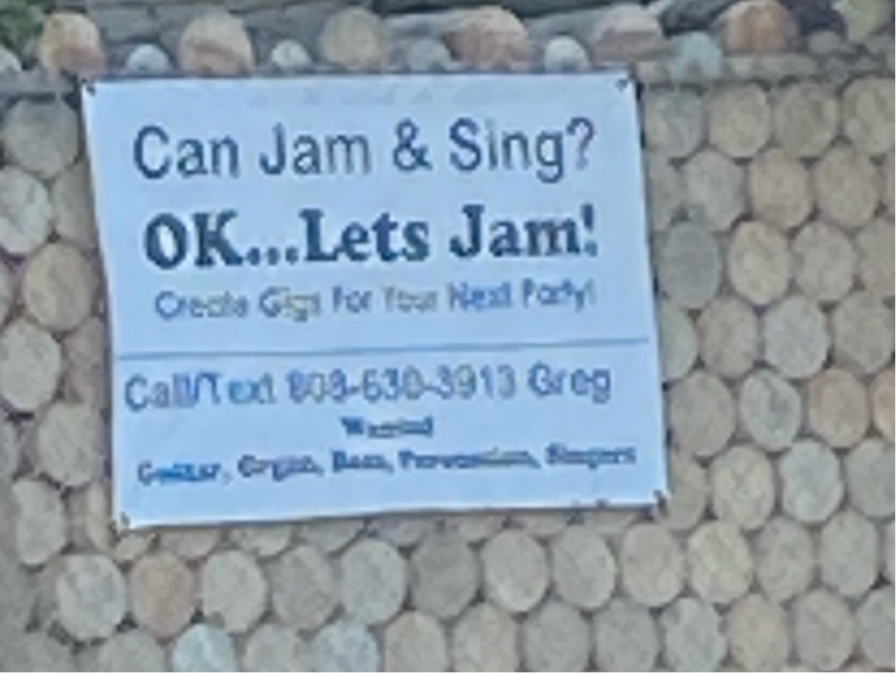
|
46434
|
|
United States
Pearl City
|
|
|
Here we see Pidgin being used on an advertisement inviting people to create music for a future party or event. This sign was located along a busy road and sometimes it’s difficult for drivers to actually read the sign. The Pidgin being used here is in large font so as to attract the locals on their commute. As this is a local community, it seems appropriate to use Pidgin.
|
Multilingual Hawaiʻi
|
|
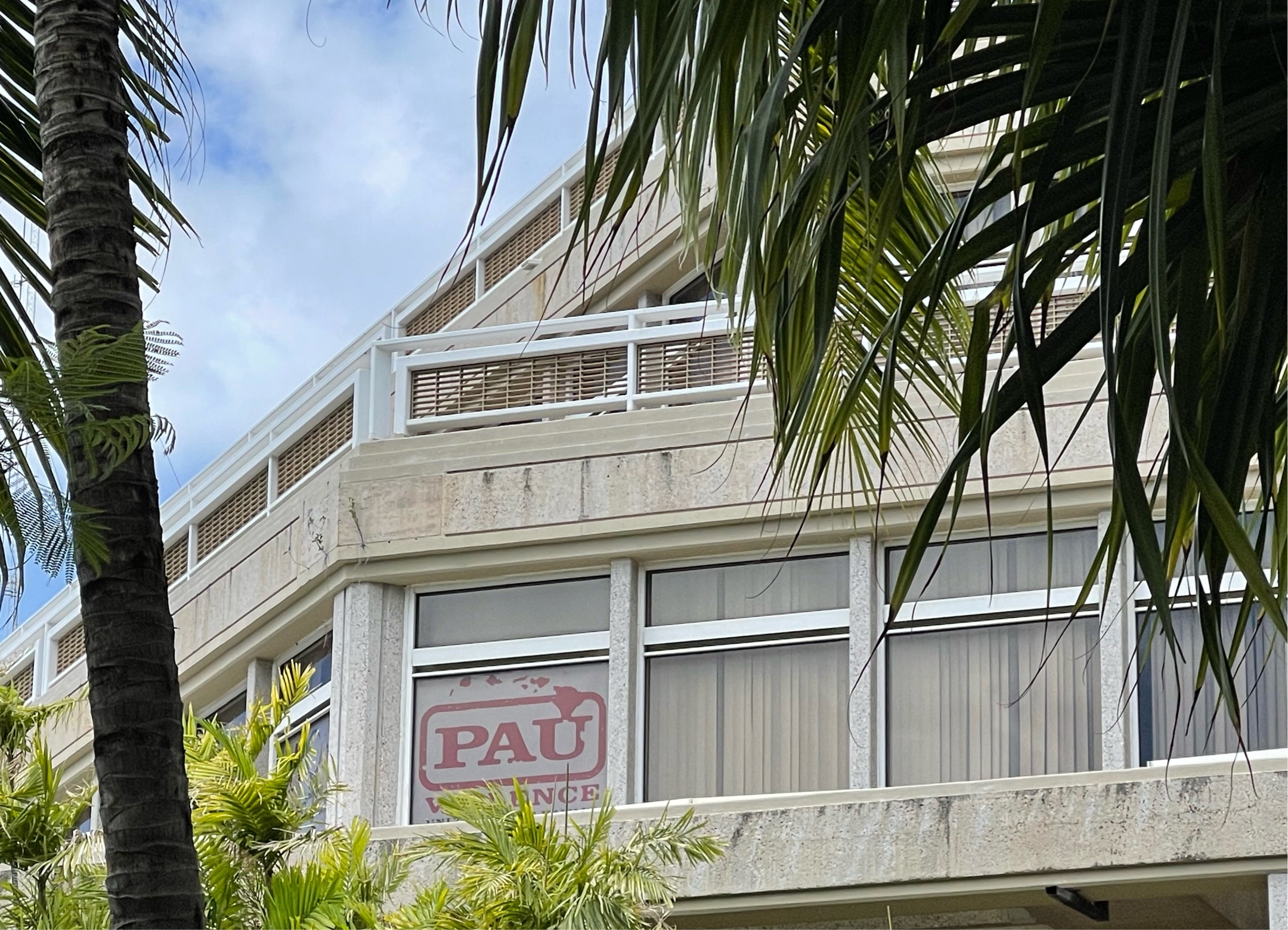
|
46433
|
|
United States
Honolulu
|
|
|
—
|
Multilingual Hawaiʻi
|
|

|
46174
|
|
United States
Honolulu
|
|
|
Poster at the doctors office. Meant to explain being safe around children if you in fact smoke and the consequences you may receive as a result. I would say it be more for locals because people whom live and drive here on the daily are most likely to see it. LM
|
Multilingual Hawaiʻi
|
|

|
46173
|
|
United States
Kaneohe
|
|
|
Showing the beauty/teaching about Hawaii wildlife as well as hoping to protect them. Message can be for locals and tourist as well because some English translation in certain parts can be found on other images. LM
|
Multilingual Hawaiʻi
|
|
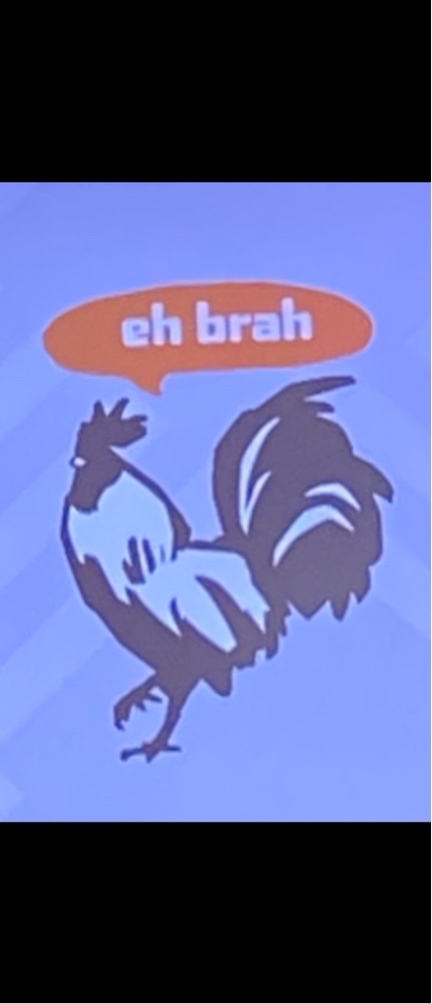
|
46172
|
|
United States
Honolulu
|
|
|
Image of Rooster speaking pidgin 2 things known in Hawaii being displayed. “Eh brah” meaning can be used like saying Eh brah no worries. LM
|
Multilingual Hawaiʻi
|
|
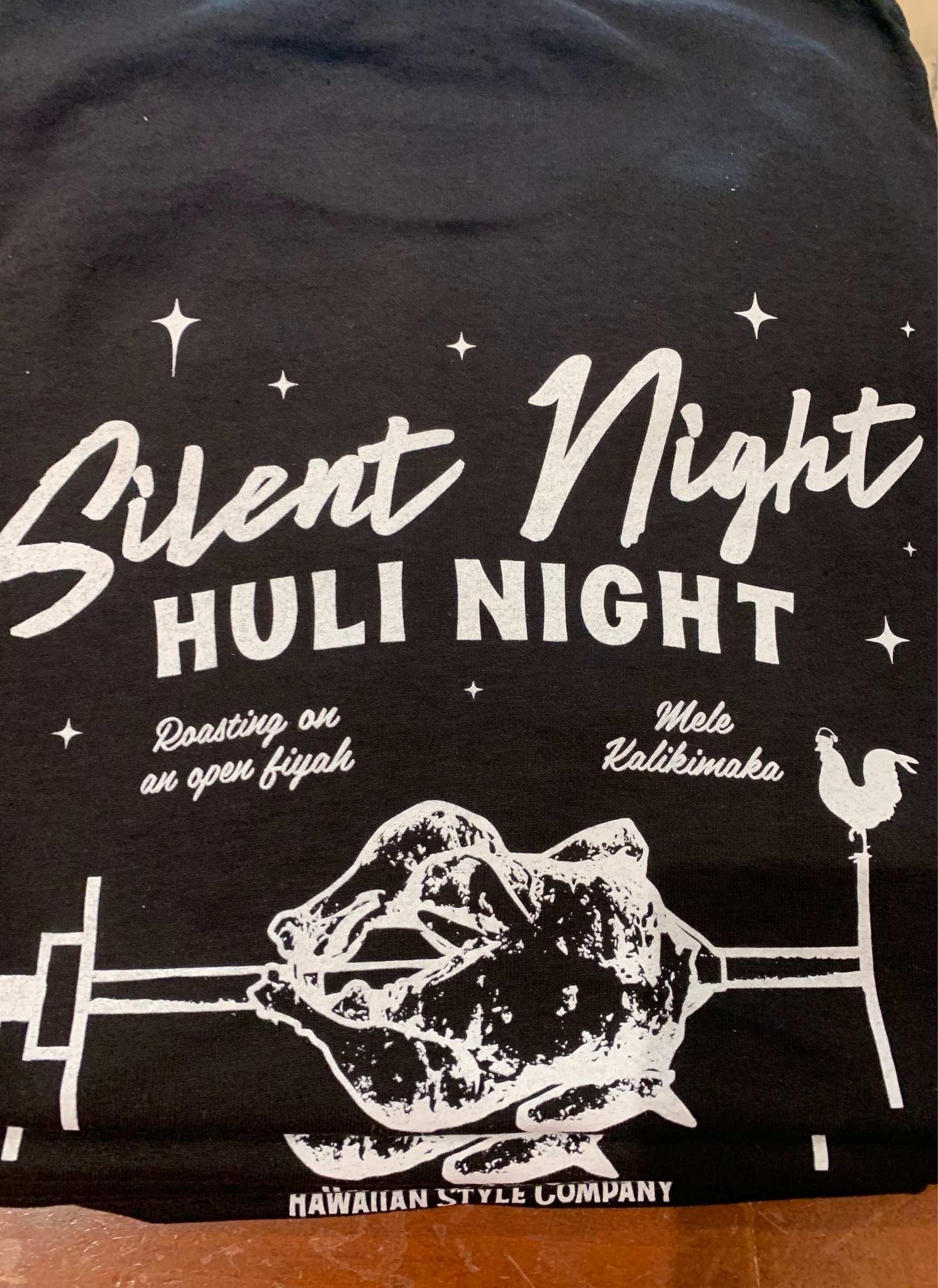
|
46171
|
|
United States
Honolulu
|
|
|
This is an example of Pidgin and Hawaiian. With Huli and being a cooking style. And Mele Kalikimaka being merry Christmas in Hawaiian. While fiyah is spelt in the Pidgin style and the whole of the shirt being a more local oriented design.
-NIP
|
Multilingual Hawaiʻi
|
|

|
46170
|
|
United States
Honolulu
|
|
|
This would be an example of Hawaiian. It’s pretty neutral on being for both locals and tourists mainly because it’s in Longs. It uses Keiki to communicate to both that it’s for kids and has nice fun designs that could be appealing to either side.
-NIP
|
Multilingual Hawaiʻi
|
|
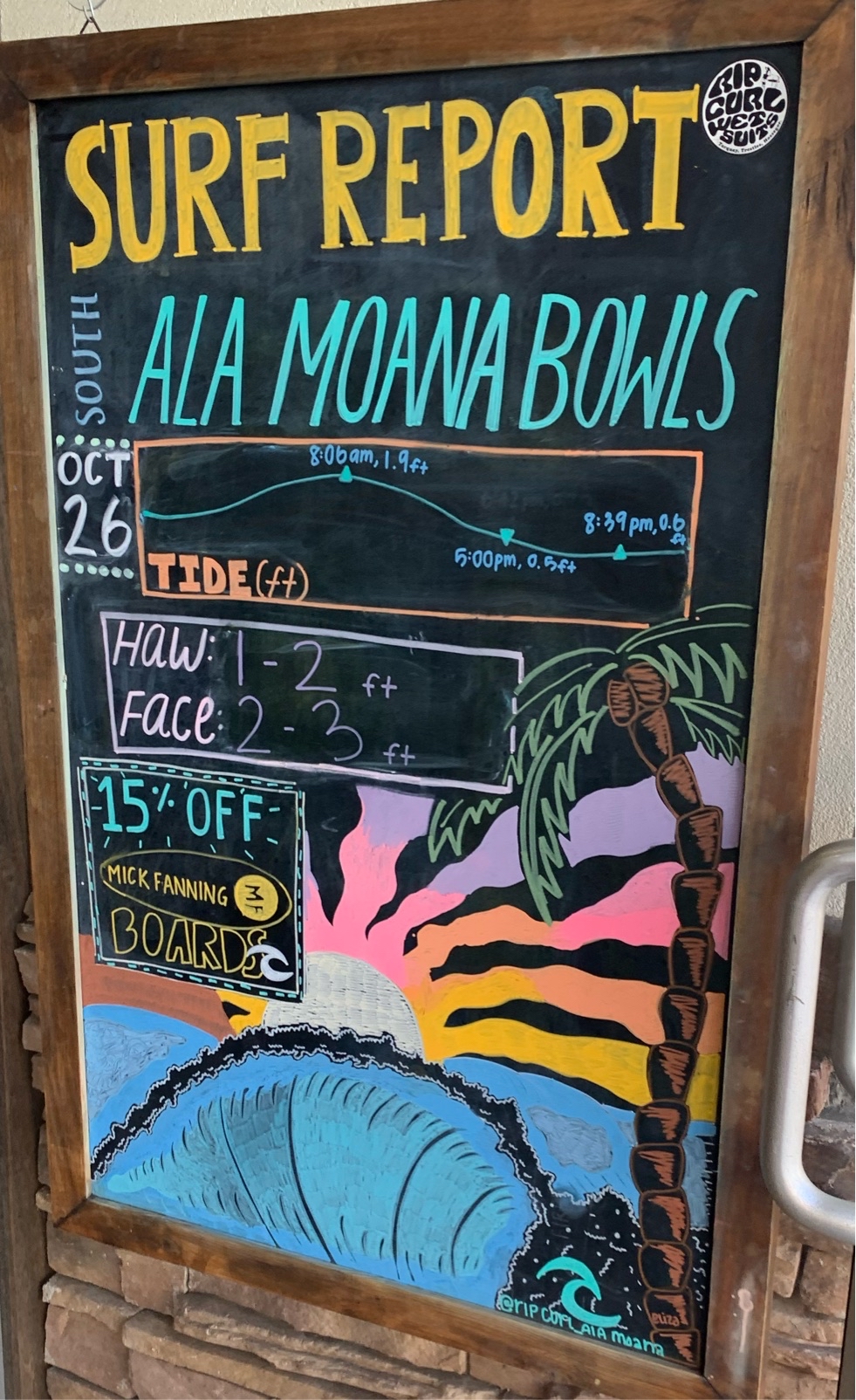
|
46168
|
|
United States
Honolulu
|
|
|
This has English, Hawaiian, and Pidgin. It’s a mock up surf report at Ala Moana Bowls which is a local spot that’s named with its Pidgin. It was outside of a clothing store so it’s probably more for tourists but has a touch of local flavor in the writing to make it more neutral.
-NIP
|
Multilingual Hawaiʻi
|
|
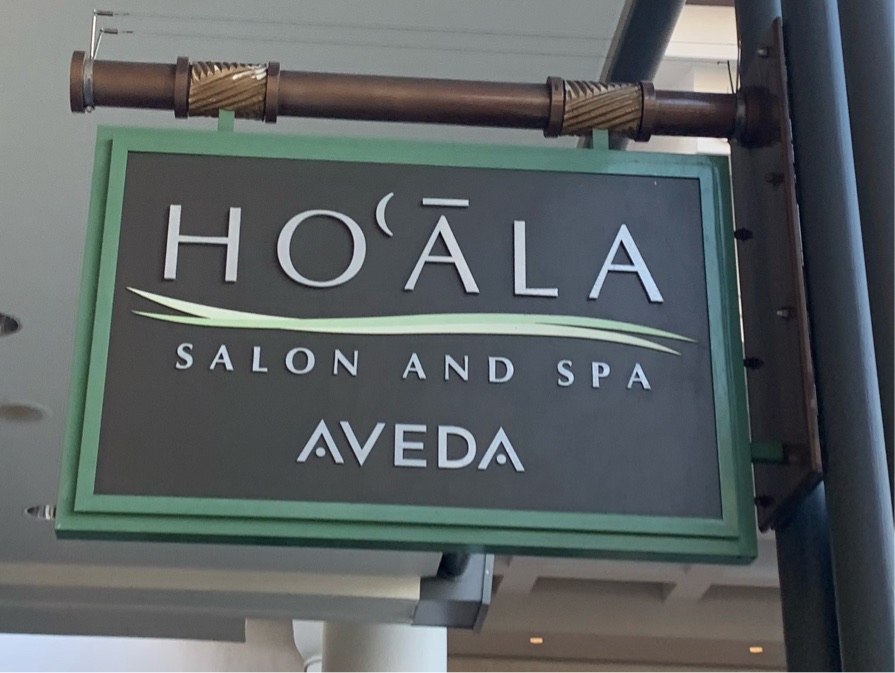
|
46167
|
|
United States
Honolulu
|
|
|
This is an example of Hawaiian. Ho’Āla meaning to awaken, rise up. It’s a sign advertising a spa so it’s more neutral in advertising to both tourists and locals.
-NIP
|
Multilingual Hawaiʻi
|
|
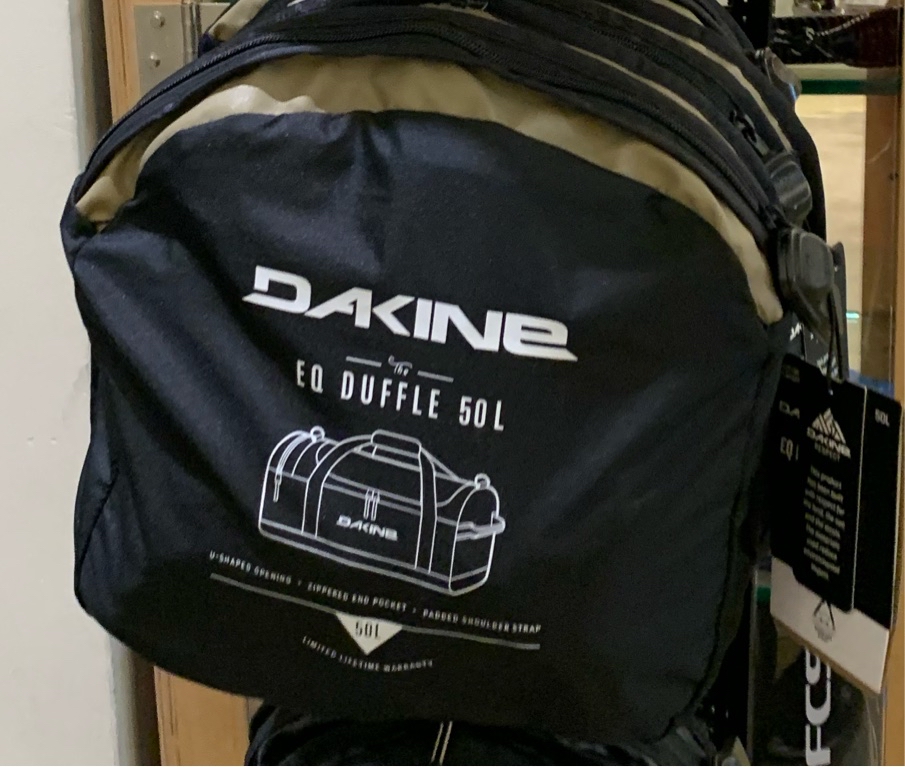
|
46166
|
|
United States
Honolulu
|
|
|
This is an example of Pidgin. It’s on a bag being sold so it’s more a commodity. I’d associate the brand Da Kine more with locals over tourists so it caters more to them. Though is accessible to both
-NIP
|
Multilingual Hawaiʻi
|
|